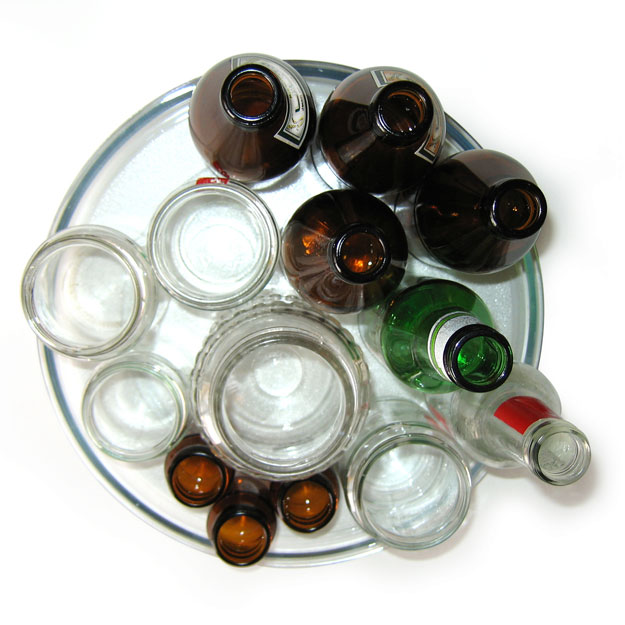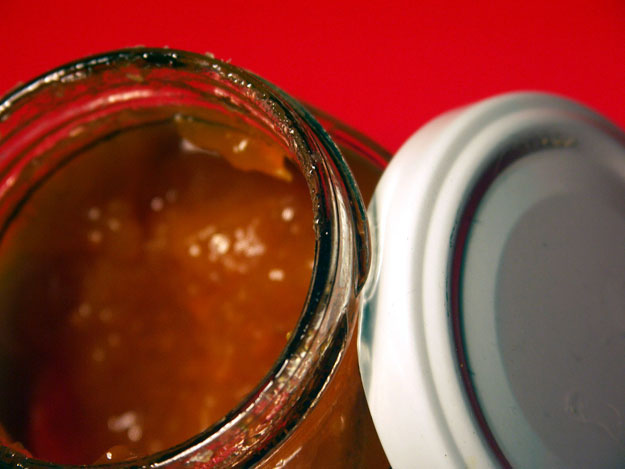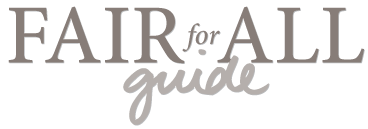What If All Packaging Was Reusable?

I had an idea at the grocery store recently as I was shopping for pasta sauce, salsa, and some other packaged foods. Lately I’ve been conflicted about glass jars. On the one hand, glass is infinitely recyclable with no loss of quality, while plastic can lose quality during the recycling process due to contamination from incompatible plastic polymers. On the other hand, it’s more energy efficient to recycle glass than plastic—both types of recycling save energy over producing new materials, but plastic saves significantly more. As I pondered which material was the more responsible choice for food packaging, it occurred to me that I was asking the wrong question.
Reusing an item generally has a lower environmental impact than recycling it. What if, somehow, all the containers used to sell packaged food were reusable? Not simply by the consumer, but by the food companies themselves?
The milkmen of yore reused the same glass bottles over and over again. Some modern companies like Oberweis Dairy continue to do the same—they use a deposit system to incentivize customers to return glass jugs to the store to be reused. What if all food packaging was standardized in such a way that companies could collect containers, clean them, and use them to package more food?
For this system, I’m envisioning various sizes of glass jars and bottles to be used for products that are already sold in these types of vessels. Rather than brands custom-molding their own glass or plastic containers with their logos or special shapes, they would use one of the standard containers agreed upon by the industry. There could be a wide range, maybe 15 to 20 sizes and shapes to accommodate various types of products, but all standardized in style and material.
Standardization would be necessary to facilitate the easy return and redistribution of the containers. With standard containers, collectors (primarily grocery stores) would be able to accept containers from various brands. Stores would encourage consumers to return containers by operating a deposit system. The cost to “rent” food packaging, maybe 25 to 50 cents an item, would be built into the price of packaged items, and upon returning the packaging, the consumer would receive their deposit back. (This system has the additional benefit of encouraging consumers to cook fresh food rather than pay more for packaged food, if they don’t plan to return the packaging.) A middleman company would separate the containers, remove their labels, clean and sanitize them, and redistribute them back to food manufacturers for reuse.

Imagine buying a jar of salsa. (Mmm, salsa.) When you’ve enjoyed your nachos and the jar is empty and rinsed, instead of tossing it in the recycling, you would toss it in a bag to return to the grocery store on your next shopping trip. Upon returning your empties, you would receive a refund of your packaging deposit. Retailers could even offer the refund in the form of store credit to build customer loyalty. For consumers already accustomed to recycling, this system is only a minor adjustment to a familiar habit. For consumers who don’t recycle, this system offers convenience and a financial incentive.
Such a system wouldn’t be without its costs. Food companies would have to purchase the containers back from the middlemen, or take on the costs of running their own collection program. There would be environmental impacts from transporting and cleaning the collected containers. However, in this closed loop, there would be nearly zero end-of-life packaging waste, notwithstanding containers that break or don’t make it back to collection. Glass containers are costly to transport due to their weight, but since new containers would need to be transported anyway—in addition to consuming raw materials and requiring disposal efforts, my hypothesis is that the costs and impacts of the reuse program would be significantly lower than the costs and impacts of creating and disposing of new packaging.
The biggest perceived cost to food companies of such a system may be the limitations on branding and design. Packaging designers would lose the ability to convey a brand’s identity through the materials, shape and other characteristics of a product’s container, and due to the consistent containers, grocery store shelves would become much more homogeneous. However, a designer would still be able to differentiate a brand through the color, material, shape, size, and style of its products’ labels. In fact, the new limitations could lead to a boom in creative label design—as long as the label can be removed from the container by the consumer or during the cleaning process, any treatment is fair game! Shelf homogeneity could be addressed with dividers, different styles of shelving, or point-of-sale displays.
This system could be applied to other packaged goods as well, such as household cleaners or personal care products—basically anything that’s sold in liquid form or in small pieces. I’m not sure if there would be contamination risks if reusing, say, a shampoo container for hot sauce, so there may need to be different styles of containers for non-food products.
I personally get really excited envisioning such a radically different (but honestly, not that different) future for consumer packaging. I’m already thinking of the opportunities it would create. (Jobs running collection and processing programs! A market for reusable non-slip bottle coozies!) Obviously this hypothetical system would require a major coordinated effort between manufacturers and retailers, and likely changes to food packaging regulations as well. However, I was telling my dad about the idea and he said companies like Coca-Cola used to collect bottles back when he was a kid, so it’s certainly not unprecedented. If the environmental impacts, especially carbon emissions, are significantly lower compared to new packaging production and disposal, I could see this system as a potential way forward for American food distribution.
